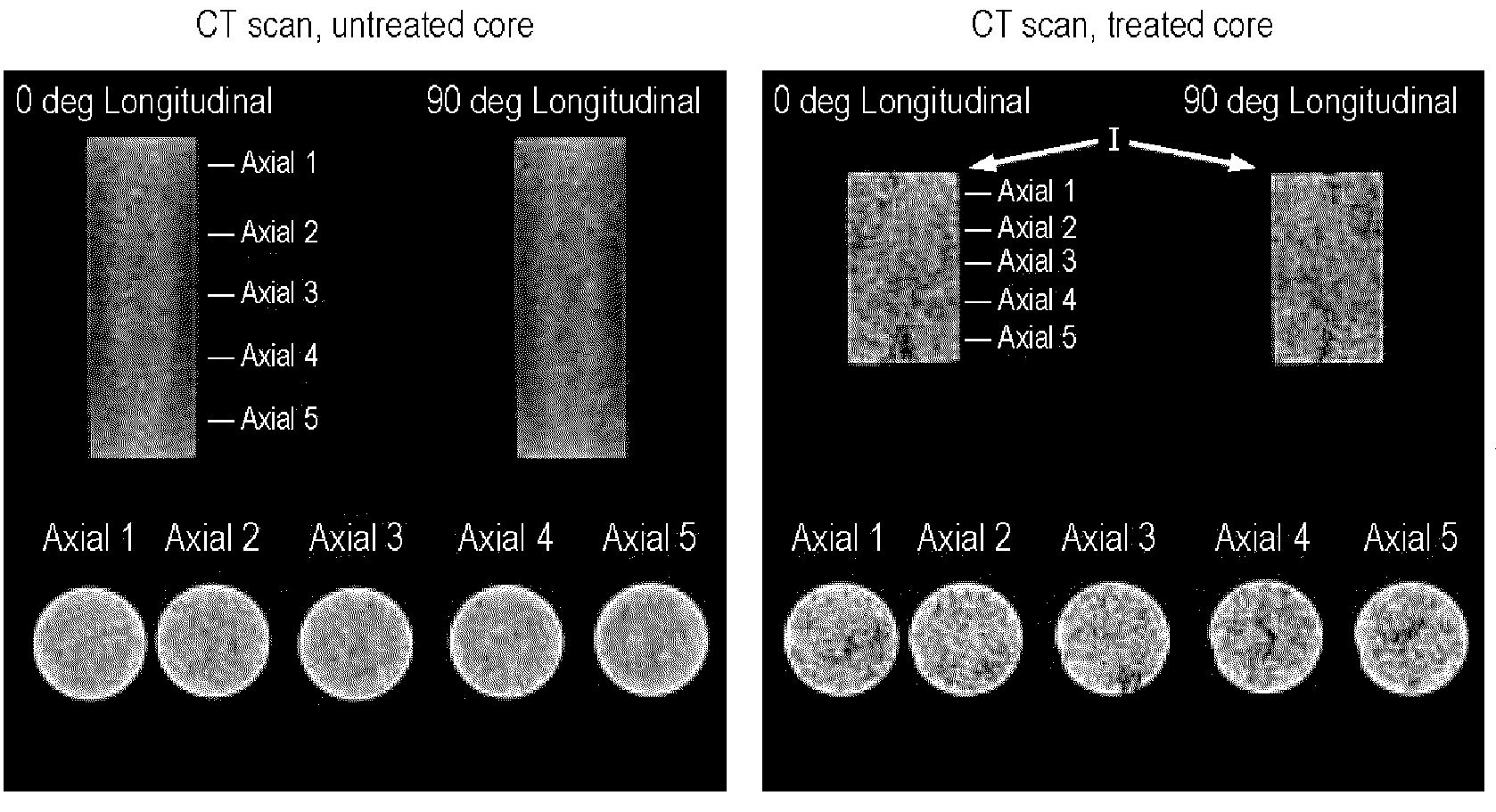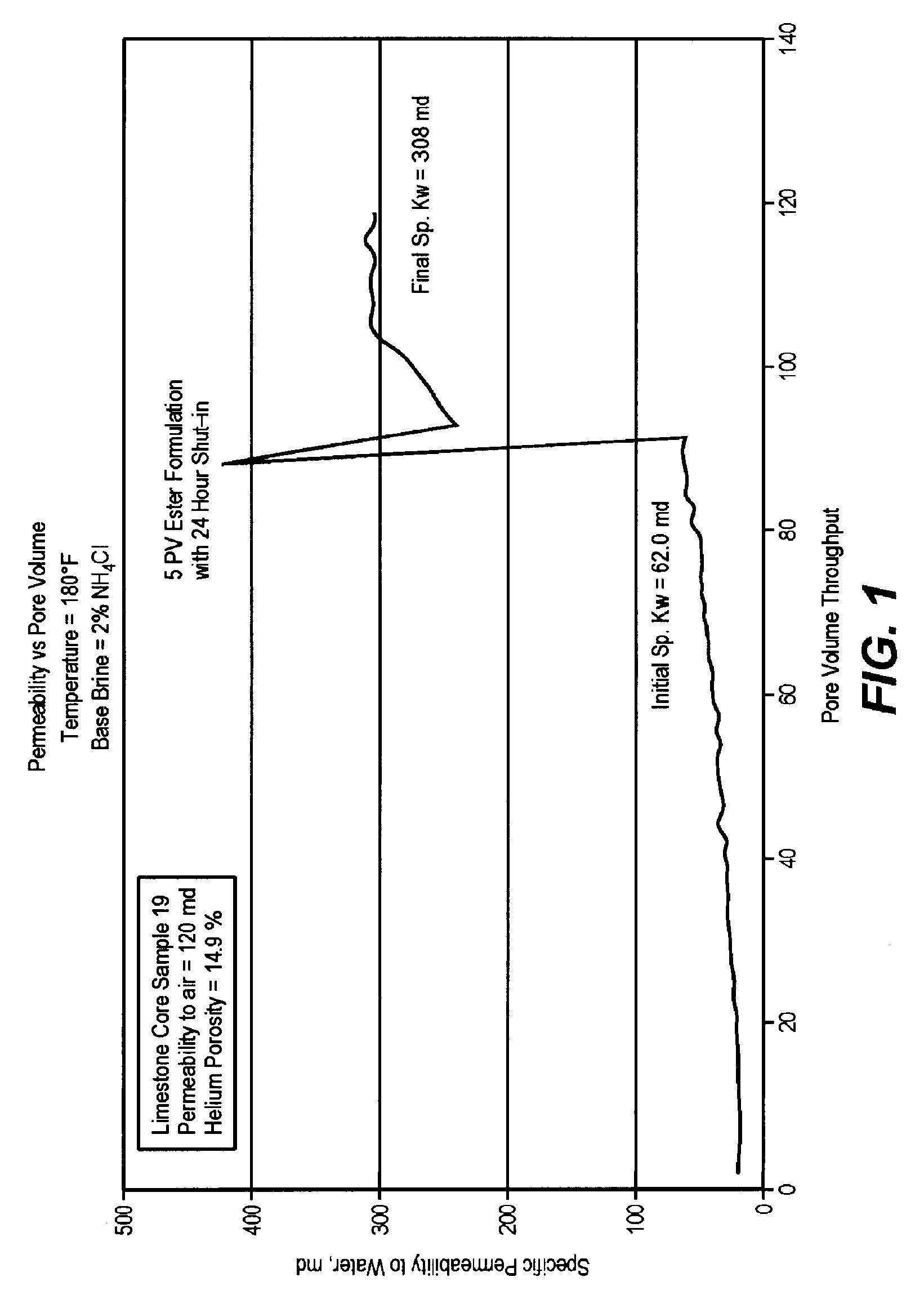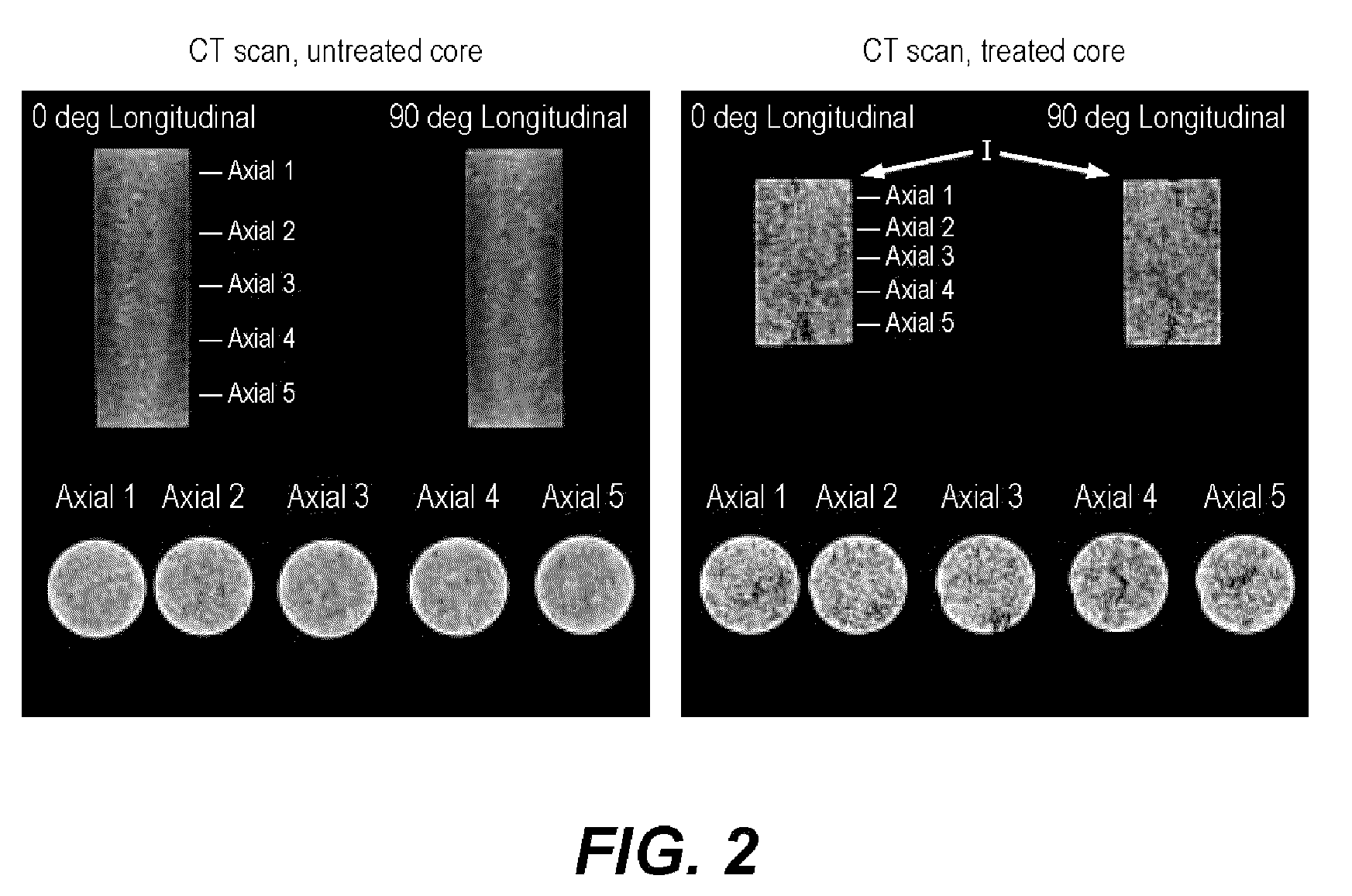Method of treating subterranean formations by in-situ hydrolysis of organic acid esters
a technology of organic acid esters and hydrolysis methods, which is applied in the direction of sealing/packing, chemistry apparatus and processes, and wellbore/well accessories, etc., can solve the problems of increasing the penetration distance, increasing the acid leakage into the formation, and not being easy to achieve. , to achieve the effect of particular applicability in stimulation and cost-effectiveness
- Summary
- Abstract
- Description
- Claims
- Application Information
AI Technical Summary
Benefits of technology
Problems solved by technology
Method used
Image
Examples
example 1
[0043]An aqueous emulsion was prepared for use as a stimulation fluid. The emulsion contained 10% methyl p-toluenesulfonate aqueous emulsion in 1% nonylphenoxypoly(ethyleneoxy)ethanol surfactant, as the oil phase. The emulsion of five pore volumes was then pumped into a limestone core with permeability of 120 md (to air) at 180° F. After shut-in for about 24 hours, the stimulation fluid was flown out. An increased core permeability of 5 times was obtained, as illustrated in FIG. 1. CT scans of the core, illustrated in FIG. 2, demonstrate a uniform increase of formation permeability (versus a limited number of wormholes).
example 2
[0044]The 10% ester emulsion stimulation fluid of Example 1 was pumped into a parallel assembly of two limestone cores; one core having a permeability of 124 md, the other core having a permeability of 6.17 md. After pumping the emulsion of ten core volumes, it was determined that the higher permeability core took eight-pore volume fluid and the low permeability core took 2-pore volume fluid. After a shut-in period of 24 hours at 180° F., the stimulation fluid was flown out. The low perm core was shown to increase permeability by 100 times vs. the high perm core by about 10 times. This is illustrated in FIG. 3. FIG. 3 demonstrates that a diverting agent may not be needed for stimulation treatments of heterogeneous formation when the ester emulsion stimulation fluid is used.
example 3
[0045]Core and parallel core flow tests were performed at 230° F. as set forth in Example 3 above. Five pore volumes of a fluid of 5% methyl p-toluenesulfonate emulsion in 1% nonylphenoxypoly(ethyleneoxy)ethanol emulsifier were pumped into a limestone core with permeability of 178 md (to air) at 230° F. After shutting in for 24 hours, the stimulation fluid was flown out. An increased core permeability of 17 times was obtained, as shown in FIG. 4. In a parallel test, the 5% ester emulsion stimulation fluid was pumped into a parallel assembly of two limestone cores (one core with permeability of 60.7 md, the other one with permeability of 5.94 md) at 230° F. After pumping the emulsion of nine core volumes, it was determined that the high permeability core took 6.3 pore volumes of the fluid and the low permeability core took 2.7 pore volumes of the fluid. Similar to the 180° F. parallel core flow testing of Example 3, the permeability increase is more significant for the low perm core ...
PUM
| Property | Measurement | Unit |
|---|---|---|
| Percent by volume | aaaaa | aaaaa |
| Depth | aaaaa | aaaaa |
| Volume | aaaaa | aaaaa |
Abstract
Description
Claims
Application Information
 Login to View More
Login to View More - R&D
- Intellectual Property
- Life Sciences
- Materials
- Tech Scout
- Unparalleled Data Quality
- Higher Quality Content
- 60% Fewer Hallucinations
Browse by: Latest US Patents, China's latest patents, Technical Efficacy Thesaurus, Application Domain, Technology Topic, Popular Technical Reports.
© 2025 PatSnap. All rights reserved.Legal|Privacy policy|Modern Slavery Act Transparency Statement|Sitemap|About US| Contact US: help@patsnap.com



